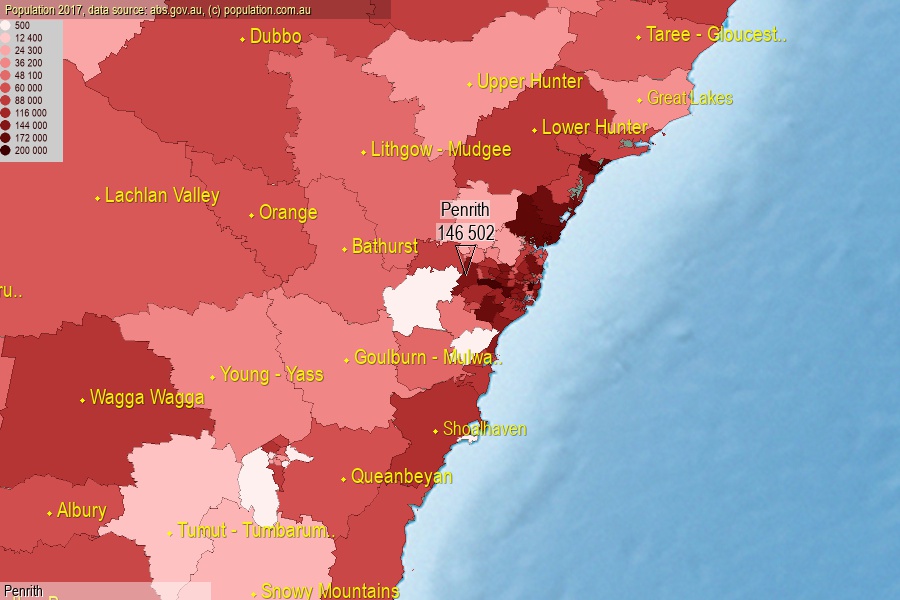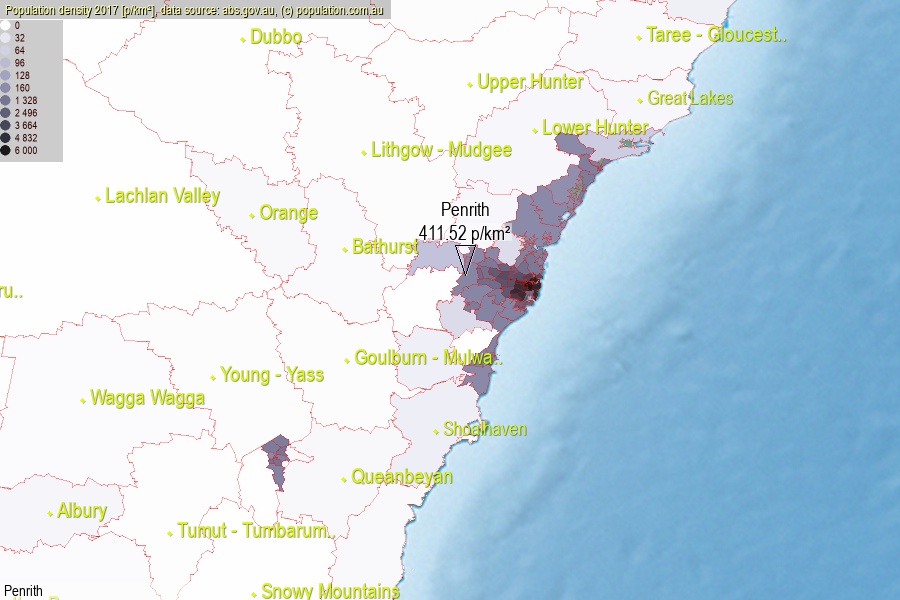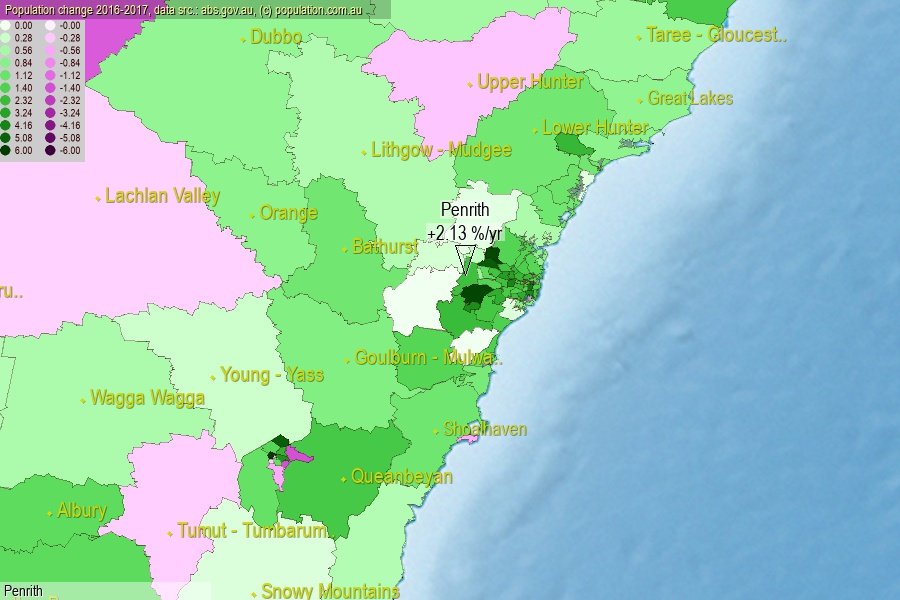 population.com.au
population.com.auLast official estimated population of Penrith (as Statistical Area Level 3) was 146 502 people (on 2017-06-30)[2]. This was 0.59% of total Australian population and 1.841% of NSW population. Area of Penrith is 356.00 km², in this year population density was 411.52 p/km² . If population growth rate would be same as in period 2016-2017 (+2.13%/yr), Penrith population in 2025 would be 173 424. [0]



Click to enlarge. Penrith is located in the center of the images.
Population [people], population density [p./km²] and population change [%/year] [2]
View borders » (new window) [4]
[1991-1992] +2.64 %/Y
[1992-1993] +2.49 %/Y
[1993-1994] +1.73 %/Y
[1994-1995] +1.44 %/Y
[1995-1996] +1.25 %/Y
[1996-1997] +1.91 %/Y
[1997-1998] +1.61 %/Y
[1998-1999] +1.21 %/Y
[1999-2000] +1.73 %/Y
[2000-2001] +1.77 %/Y
[2001-2002] +0.60 %/Y
[2002-2003] +0.01 %/Y
[2003-2004] -0.57 %/Y
[2004-2005] +0.23 %/Y
[2005-2006] +0.23 %/Y
[2006-2007] +0.75 %/Y
[2007-2008] +1.55 %/Y
[2008-2009] +1.15 %/Y
[2009-2010] +0.65 %/Y
[2010-2011] +0.96 %/Y
[2011-2012] +1.78 %/Y
[2012-2013] +2.12 %/Y
[2013-2014] +2.15 %/Y
[2014-2015] +2.52 %/Y
[2015-2016] +2.38 %/Y
[2016-2017] +2.13 %/Y
[0] Calculated with linear interpolation from officially estimated population
[1] Read more about SA3 and Australian Statistical Geography Standard (ASGS) on abs.gov.au
[2] Population data from Australian Bureau of Statistics (Population and density: 2017; change: 2016-2017)
[3] Digital Boundaries: Australian Statistical Geography Standard (ASGS) 2016.
[4] Border coordinates are simplifyed using Ramer-Douglas-Peucker algorithm.